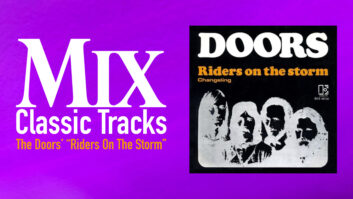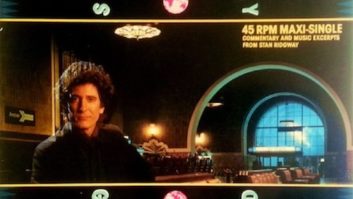I sure wish I knew how to channel inspiration, call it up on demand. My life would be a whole lot easier. After 12 years of public school, four years of college, two more for a master’s in journalism, and then 30 years of daily, weekly and monthly deadlines, I’ve written a helluva lot of papers and stories, often under severe time pressure. Sometimes the words roll right out, sometimes they fight me. And sometimes, when the inspiration is lacking on a one-sheet for the marketing department, the words have to be summoned through every trick in the book.
The thing is, I never really know when inspiration will hit or when it will run away. I sure wish I did, or at least had some element of control over it. Sure, I do all kinds of tricks. In writing my first big feature for Mix, on sound for The Doors movie, I would blast vinyl in the office and get everyone either involved or pissed off at me, mostly the former. The title of the article came from a lyric: The Music Is Your Special Friend.
I’ve played rhyming word games in my head to help stimulate an idea for a lead sentence, and I’ve picked up stories by some of my heroes, like Hunter S. Thompson and Tracy Kidder, just to let my mind get away. Then suddenly, the structure of the story pops into my head. I’m embarrassed to say how many cover lines I’ve come up with either in the shower or walking to the store.
Want more stories like this? Subscribe to our newsletter and get it delivered right to your inbox.
At the same time, I have spent endless hours in front of a blank screen, with an amazing audio story right in front of me, and…nothing. I’m not talking about something like writer’s block, I’m talking about how I can’t find the germ of the story, the one line that makes it all make sense. That’s what I mean by inspiration. Finding the right note that becomes the bigger song.
There are all types of inspiration in the everyday world, from the son who volunteers at the food bank, inspired by his father’s fight with dementia, to the overweight 40-something who has a health scare and just finished his 10th marathon in 10 years. That, too, is inspiration, and it is inspiring. But I’m talking about creative inspiration. Where does it come from?
It might come from an event, such as Neil Young writing and recording “Ohio” within days of the Kent State shootings. It might come from a birth or a death of a loved one, such as John Lennon’s “Beautiful Boy” or Eric Clapton’s “Tears From Heaven.” Inspiration doesn’t distinguish between joy and tragedy; as best I can tell, it comes from an emotional core, unique to each individual on the planet.
For some, a walk in the woods or the sound of waves might stimulate the brain’s right hemisphere; for others it’s a treadmill at the gym. In the world of music and recording, it’s often the rare guitar, the new plug-in or the very presence of other musicians in the room that proves inspiring.
Related: Composer Nathan Barr, by Jennifer Walden, Sept. 27, 2018
For composer Nathan Barr, featured on this month’s cover, the reconditioning and installation of a rare 1928 Wurlitzer Theater Organ, for years on the Newman Scoring Stage and then abandoned to time, has inspired him in ways he couldn’t have foreseen. Heck, he built a new studio for it, and it’s stunning.
I’ve always considered film and television composers a special breed, combining the best of art and science. Their inspirations must be endless. They will tell you that they are inspired by the story and the picture, and for certain, that’s a big part of it. But to bring such emotion and power to picture with a full, lush orchestral score, or even the single plink of a piano key… I find that kind of talent inspiring. I can’t imagine the levels of inspiration a composer pulls from.
I’m sure that, like me, they all have their moments sitting in front of a screen staring blankly. I’m also sure that like me, they nod in agreement when they hear the late, great Jerry Garcia sing, “Once in a while you get shone the light / In the strangest of places if you look at it right.”







